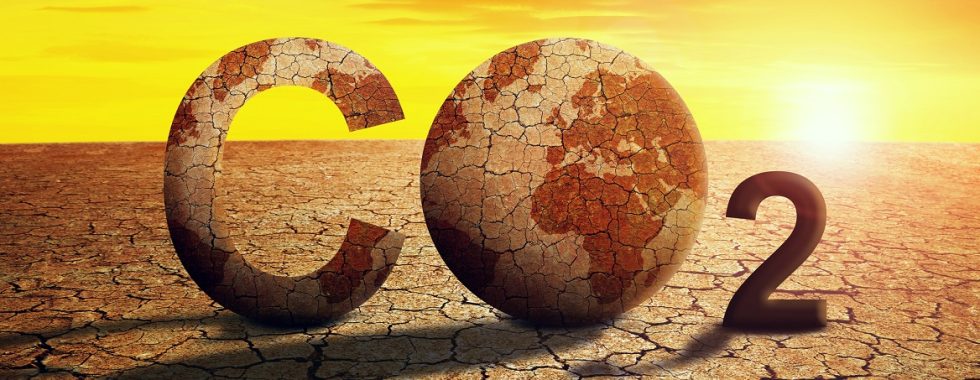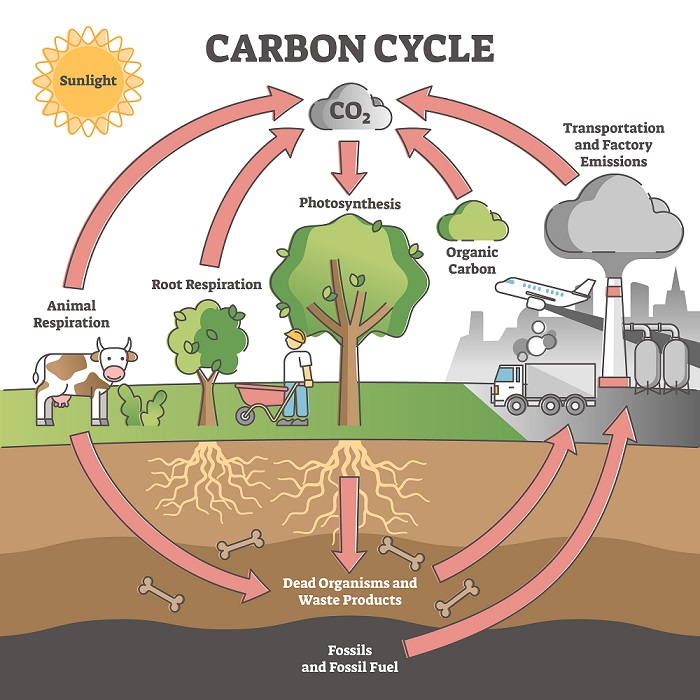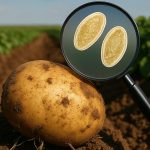Soil Carbon Sequestration – An Approach to Mitigate Climate Change
Carbon dioxide is the primary greenhouse gas. The concentration of atmospheric carbon dioxide has increased in recent years, causing a stronger greenhouse effect and global warming. Carbon is stored in the atmosphere, vegetation, animals and in soil. Of all carbon reservoirs, soil is the largest pool, holding more carbon than the other three reservoirs combined. There is an opportunity to mitigate climate change through improved agricultural practices in order to store more carbon in the soil. The carbon content of the soil can be raised by increasing carbon inputs, decreasing emissions, or a combination of both.
| Gt carbon | |
| Global soil organic carbon (0-300cm) | 2344 |
| Carbon in atmosphere | 762 |
The process in which atmospheric CO2 is removed from the atmosphere and stored as soil carbon is referred to as “carbon sequestration”. The degradation of soils due to agricultural activity and poor land management resulted in the release of roughly 78 Gt of the original soil carbon into the atmosphere. This is mainly a result of increased decomposition of organic matter due to tillage, reduced amounts of plant residues that are returned to the soil, and soil erosion.
Carbon exchange between the soil and the atmosphere
Carbon dioxide is being continuously exchanged between the soil and atmosphere. Atmospheric CO2 is fixed by photosynthesis, in which plants absorb atmospheric CO2 and turn it into sugar. Some of the absorbed CO2 is returned to the atmosphere as a result of the root respiration process. When plants and animals die, the carbon is added to the soil. However, the decomposition of organic matter (including by bacteria also releases CO2 to the atmosphere.
Environmental conditions such as rainfall, temperature, soil oxygen levels and moisture affect the decomposition rate. Warm, humid conditions favor higher decomposition rate, while decomposition rate under cool, dry conditions is slower. Higher oxygen levels increase the microbial activity and, therefore, the decomposition rate.
Carbon storage in soil
Carbon is stored in the soil mainly in organic matter and is referred to as soil organic carbon (SOC). Since the organic matter contains approximately 60% carbon, a factor of 1.72 is commonly used to convert soil organic matter (OM) to SOC, and SOM = 1.72 x SOC.
Soil inorganic carbon (SIC) is predominant in arid and semiarid soils. It is present in various forms known as the carbonic acid system, consisting of CO2 in the gaseous phase, dissolved carbonic acid H2CO3, bicarbonate HCO3–, carbonate CO32- and calcium and magnesium carbonates in the solid phase. The formation of calcium carbonates mainly depends on soil pH, temperature, CO2 concentration in the soil, and soil calcium content. It can be described by the following equations:
CO2 + H2O ß à HCO3– + H+
Ca2+ + 2HCO3– ß à CaCO3 + H2O + CO2
Changes in inorganic carbon are slow. Therefore, most of the efforts to enhance soil carbon sequestrations are focused on soil organic carbon.
Alternative agricultural and land use practices for enhanced carbon sequestration
Alternative agricultural and land use practices can reduce carbon emissions from soil and enhance carbon sequestration. Such practices include:
- Addition of organic amendments to the soil (compost)
- Implementing reduced or no-tillage methods
- Proper fertilizer management
- Planting cover crops
- Implementing crop rotation, grazing management etc.
The addition of organic amendments, such as compost and manure is one of the practices with the highest potential to increase carbon sequestration. Most of the organic matter in these organic amendments is already decomposed and, therefore, a large portion of the carbon added is stored in the soil. Some models suggest that 9-14% of carbon added with compost will still remain in soil after 100 years.
Increasing the carbon content of the soil has additional benefits: It improves soil structure, water holding capacity and nutrient retention, increases the biological activity in the soil. In addition, it can alleviate the negative effect of pollutants.
In addition, compost can supply some of the nitrogen demands of the crop and well as some of the phosphorus, potassium, and micronutrients. Substituting some of the fertilizers with compost can help in reducing greenhouse gas emissions resulting from fertilizer manufacturing process. The total global footprint of fertilizers is approximately 0.6 Gt CO2eq / year. Improving the use efficiency of fertilizers by 25% can decrease global carbon emissions by 150 Mt annually. As part of the effort to mitigating climate change, the European Commission has set a target of 25% agricultural land under organic farming by 2030. One of the ways to achieve that is by adopting AI-based platforms, such as yieldsApp, that use artificial intelligence to improve soil health.
Reduced tillage – Tillage breaks up soil aggregates, releasing CO2 into the atmosphere and making the soil susceptible to erosion. Therefore, reduced tillage can decrease carbon losses from soil.
Cover crops are usually planted after the harvest and before planting the next crop. Like any other plant, they pull in CO2 from the atmosphere, and their residue contributes to soil carbon. However, decomposition of fresh organic matter by bacteria releases CO2 to the atmosphere. Therefore, it is uncertain how long the carbon remains in the soil. Environmental conditions and other agricultural practices will determine how long it will remain in the soil. Such conditions include, for example, good soil aggregation, that can help protecting the added carbon from bacteria and cold climate conditions that slow down microbial activity.
Proper fertilizer management – Applying fertilizers according to the crop’s needs and soil test results can avoid losses of nutrients or excess fertilization and enhance the growth of the crop. This can: 1. reduce carbon emissions due to the fertilizer manufacturing process. 2. Increase carbon sequestration, as a result of enhanced photosynthesis.









